So… I’ve been watching an embarrassing amount of K-drama lately. Given the group of friends I hang out with these days, and the one class on Asian Media and Pop Culture I’ve been auditing in school, I’ve been strongly encouraged to revisit my teenage fascination with dramas.
And so far, I’ve conquered, and by conquered I mean completed in full, Master’s Sun (2013, 17 episodes), Pinocchio (2014 – 2015, 20 episodes), Personal Taste (2010, 16 episodes), and Heartless City (2013, 20 episodes).
And conducted a tactical retreat from My Love from Another Star (2013-2014, 21 episodes), I Can Hear Your Voice (2013, 18 episodes), City Hunter (2011, 20 episodes). And by tactical retreat, I mean I couldn’t finish the series for a myriad of reasons.
I feel like at this point there should be a disclaimer that these are just my personal thoughts on K-drama and that I mean no offense to anyone if I rag too hard on a series. I am also aware that these personal observations are based on a very, very small sample of all the marvelous offerings from the weird and wonderful world of K-drama; so if I extrapolate something about the genre as a whole, please know that I know that it is a biased opinion as well.
General Observations
1.This is a woman’s genre. Written for women by women. And I didn’t need to do any research to figure this out. How did I know?
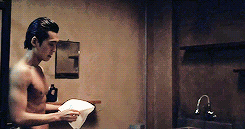
- All the guys are abs-tastic and the women are average-looking, silly, bumbling, over-dramatic, irrational, indecisive, and generally more trouble than they’re worth, but they get the guy anyway.
- Ok.. I’ll concede sometimes they have cool qualities too like Park Kae-in in Personal Taste who’s the only character who actually gets offered a job and completes it with aplomb… And I can’t think of any other female character from the 5 dramas listed above that I like
- obligatory shower scenes for the male characters where we get to ogle their hot bods; living together scenes at his place where we get to see the normally calm and unflappable male character get flustered; male characters getting injured/sick and abused
What does this mean?
As a female viewer, we want the guy to be hot and the girl to be completely average so we can seamlessly insert ourselves into her place and make-believe that a guy like that is totally within our reach without having to feel like we have to go out of our way to look like supermodels before we can snag a hot guy.
We want to see that our mere presence could unsettle and disrupt a character that’s normally portrayed as stoic and cool, calm and collected, and generally on top of things and in control because, hell, it’s empowering.
More than that, I think what’s key in a lot of these dramas is male suffering.
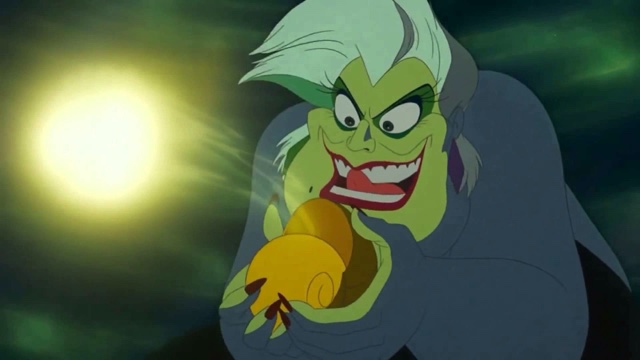
(Sweet, delicious pain. I swear I look like that when it happens too… There’s even the green glow.)
In a lot of these dramas, male characters are brought low by overpowering external or societal circumstance and made to suffer both psychologically and physically. And surprisingly (ok, maybe not that surprisingly), physical trauma dealt to male characters usually come in the form of penetration by various implements such as knives and bullets.
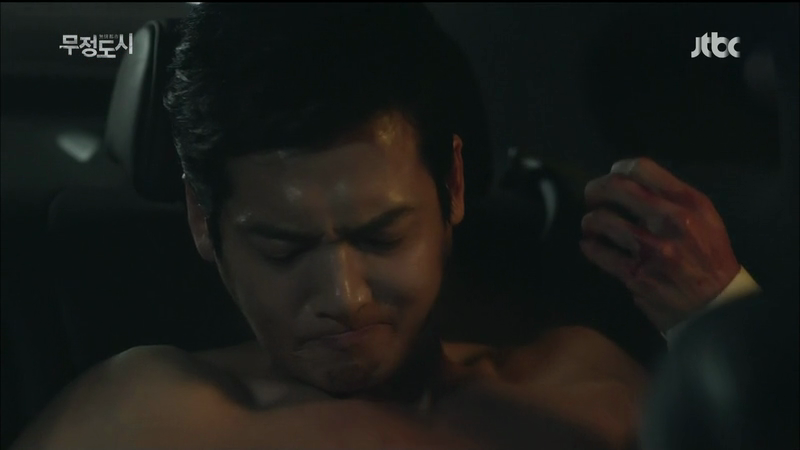
(Getting stabbed and then having to sew yourself back up… in Heartless City)
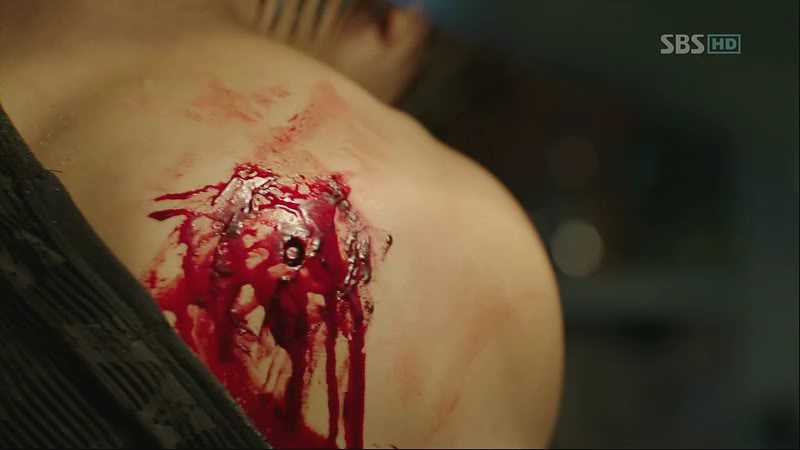
(Getting shot in the shoulder trying to flee from your sort of love interest who doesn’t know it’s you in City Hunter)
This becomes especially significant when you think about how the spectacle of male suffering is put on display by women writers for women audiences. Isn’t it also strange that these dramas are coming out of countries with very traditional and very conservative patriarchal societies like Japan and S. Korea?
I suppose this means if we want to talk about a flip on the Laura Mulvey concept of the Male Gaze and the cinema, instead of looking at Magic Mike XXL (2015) and saying that it still presents the male body as a triumph of athleticism without lowering its status to a slab of meat to be ogled by women the way female bodies are ogled by men on screen, we should totally be looking at K-dramas to establish this point.
2. The Gift-giving Language of Love is privileged. Narratives and especially romance plots, seem to narrow down to a prop that changes hands even when there’s no real need for it.
- Handphones (Heartless City; Pinocchio)
- Cars (Heartless City)
- necklaces (I Can Hear Your Voice; Heartless City; Pinocchio; Master’s Sun)
- giving each other canned drinks (All of the above mentioned series except Heartless City – no cheap canned drinks for them… only Bourbon in fancy glass bottles)
- clothes (Heartless City, City Hunter, Personal Taste, Master’s Sun)
- bags/wallet (City Hunter)
- shoes (Pinocchio)
And I’m sure there are a thousand and one other examples from the series listed above and other series available. But it does make you wonder how much of this is because of sponsorship and pressure to do product placement in a show just so it can get funded and made. And that sorta makes you wonder about how much of the narrative is controlled by product placement and dictates from the companies of those products and how much of a stranglehold these product company conditions have on the artistic vision of drama creators.
I think the most ridiculous example I heard from what my friends shared was when a series changed its title (The King 2 Hearts [2012]) just so it sounded more like Dunkin’ Donuts because they were a major sponsor for the series. Like please. omg. I LOLed.
Anyway, If anyone’s interested in exploring that question further, Morgan Spurlock of Supersize Me (2004) fame, as a thought experiment, looked at one extreme end of the continuum between filmmaker’s artistic control and pressure exerted by commercial companies with a stake in a film by constructing a narrative entirely around the process of getting sponsorship, and entering into negotiations over product placement and narrative control for a film in a 2011 release called The Greatest Movie Every Sold. It didn’t do super well at the box office, but it is still a fun watch and an eye-opening experience about what goes on behind the scenes before a film is even written or made except that the gonzo documentary film itself was an interesting collapse of the pre-production time-space and the production phase.

3. Privileging of the romance plot over the actual plot. At some point the K-drama narrative devolves into a will-they-won’t-they back and forth where both characters know that they like each other but seem to throw up imaginary roadblocks for themselves.
City Hunter: Wanting to be together because they like each other. Trying to stay apart because it’s dangerous to be together. Deciding to get together because this way they can watch each others’ back. Deciding it’s safer apart after all with the guy asking the girl to forget him and pretend not to know him because he can’t trust himself to do the same. And then… I don’t know. I found it too tedious to continue.
My Love from Another Star: Falling in love with her because she seems to be a reincarnation of someone from his past. Staying away because his sell-by-date is fast approaching and he needs to leave earth. Staying by her side because she’s in danger and he needs to protect her. She tries to distance herself from him because she finds out having him stay is killing him. And then… I don’t know. This was where I lost interest.
I Can Hear Your Voice: Stays with her to protect her. Disaster strikes… actually, no, amnesia strikes. They get separated and then back together because she needs to put his amnesiac life back on track and give it direction. But makes him promise to leave the moment he regains his memory. He pretends to not remember anything so he can stay with her. But then things get dire and he needs to reveal he’s gotten his memory back and then I get confused and a little bored…
Worse still, a lot of these dramas purport to have an actual dramatic plot and a romance plot yet the actual plot never really takes centre stage except during the first and last couple of episodes.
Case in point would be Personal Taste where this whole business starts with a really pressing need for a Small/Medium-sized Enterprise (SME) architectural firm to submit a sound architectural concept for the new Art Museum building in order to avoid going under. 14 episodes later no one’s done anything remotely architectural in nature.
This problem is not too severe in I Can Hear Your Voice where in the 18 episode run this legal drama with a hint of magical realism deals with three other cases apart from the main case which they revisit three times in various permutations. But it still pales in comparison to Hero (2001, 11 episodes) a J-drama where two interlinked cases are solved in each episode until the main story arc moves into full swing at about episode 8. Hero also seems to deal with more hard hitting issues in a more nuanced manner such as coerced confessions, unethical legal practices, corruption, obstruction from overzealous cops, sensationalistic media, interference from politicians and well connected, powerful elites and the general ennui that possesses his fellow prosecutors who feel disconnected and powerless in an overwrought legal machine.
Finally, there also seems to be an inability to advance more than one line of narrative at one time.
For instance in Heartless City it’s foregrounded how important it is for the police to match a face to the mysterious Doctor’s Son who’s taking over the underworld. Yet, important clues revealed in episode 5 don’t get revisited until episode 8 because they needed time to show girls going shopping, and the two male leads being romanced. Granted that much of the screen time was devoted to Doctor’s Son moving pawns into position but it got so frustrating waiting for the police dude to catch a clue…
4. Here’s a list of other plot set pieces & Trends that I’ve noticed (I wish I could do screen caps for all of these but copyright laws…):
- Authority figures are evil and are not to be trusted under any circumstance (City Hunter; Heartless City; I Can Hear Your Voice)
- Obligatory Hospital Scenes (Leukemia in City Hunter; Stab wounds in Heartless City; Amnesia/major stab wounds in I Can Hear Your Voice; fainting spells/concussion/poisoning in My Love from Another Star; Concussion from falling planks in Personal Taste; getting stricken with a particularly vicious strain of the flu in Pinocchio; Stabbed by a screwdriver in Master’s Sun)
- Columbarium Scenes (City Hunter; I Can Hear Your Voice; Pinocchio; Master’s Sun)
- Conveniently non-fatal knife and gunshot wounds that become a legitimate excuse for skinship (Heartless City; City Hunter; I Can Hear Your Voice)
- Orphans (Heartless City; City Hunter; I Can Hear Your Voice; My Love from Another Star; Personal Taste; Pinocchio; Master’s Sun): Because the young are the hope for the future and when you’re an orphan your ties to the past and the sins of the father are more tenuous and therefore easier to free yourself of
- Obligatory Shower scene (Heartless City; City Hunter; My Love from Another Star; Personal Taste; I can Hear Your Voice): They ALL have it! (I thought Daye was kidding when she said ‘obligatory’…)
- Living Together (City Hunter; I Can Hear Your Voice; My Love from Another Star; Personal Taste; Pinocchio)
- Providing Accommodations (Personal Taste; City Hunter; Heartless City; My Love from Another Star, Master’s Sun ) -I’m actually very surprised by the number of guys who end up giving girls buildings/architectural designs/houses/apartments… Is there some kind of wish-fulfillment/enculturation going on here?
- Kissing (Heartless City; City Hunter; My Love from Another Star; Personal Taste; I Can Hear Your Voice; Pinocchio; Master’s Sun)
- Sex (Personal Taste; Heartless City)
- Illegal U-turns on strangely empty four-lane roads (Heartless City; City Hunter; Pinocchio): It’s just funny because it seems so random yet so consistently used
- really bad tailing of suspects (City Hunter, Heartless City): I mean seriously? I know they have to clear the traffic for filming purposes but when there are ONLY TWO cars on the road, how can you not know you’re being followed?! And seriously, who tails someone in a BRIGHT RED CAR!? (I liked how in Pinocchio they actually vetoed the bright red car -_-“) I guess it’s moments like these when you see a clash between the needs of the narrative and the demands of product placement.
5. Lush accommodations and wardrobes
My Love from Another Star: 400 year old alien living the high life
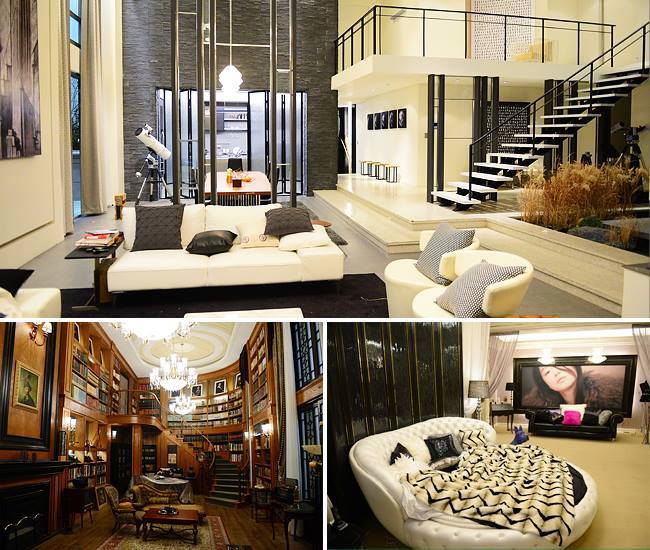
City Hunter
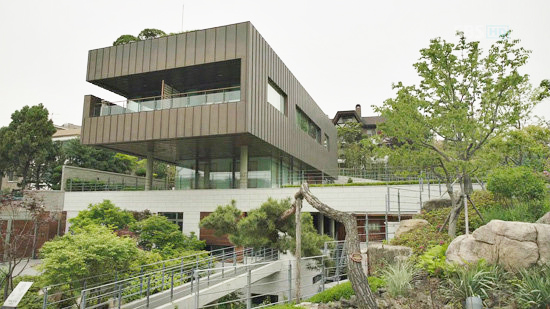
Lee Min-ho’s decidedly un-vigilante-like fashion sense in City Hunter
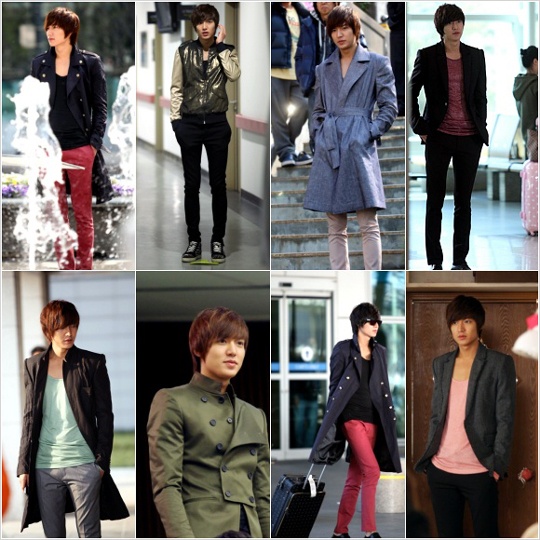
Personal Taste: I have to admit they made pretty good use of the space in this drama though. A lot of significance attributed to one spot in the house where the characters do most of their living and bonding but this same spot is also a site of past trauma so there’s a kind of reclamation of it through the romance plot. The spatial doubling is quite aptly executed and the romance is sweet.
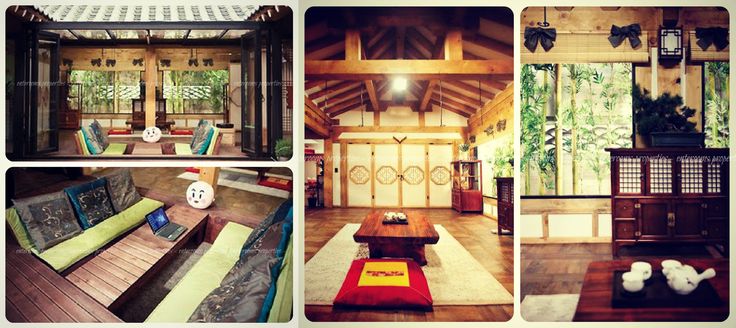
And I have a sneaking suspicion they use the same circular office for all their dramas – Hyun-soo’s office in Heartless City, Do-bin’s office in Personal Taste, and Min-ho’s office in Falling for Innocence (2015). I tried to get screenshots from all the series but dramafever.com and Netflix won’t cooperate and I think my tech-unsavviness is showing so here’s the only picture I could find online from Heartless City.
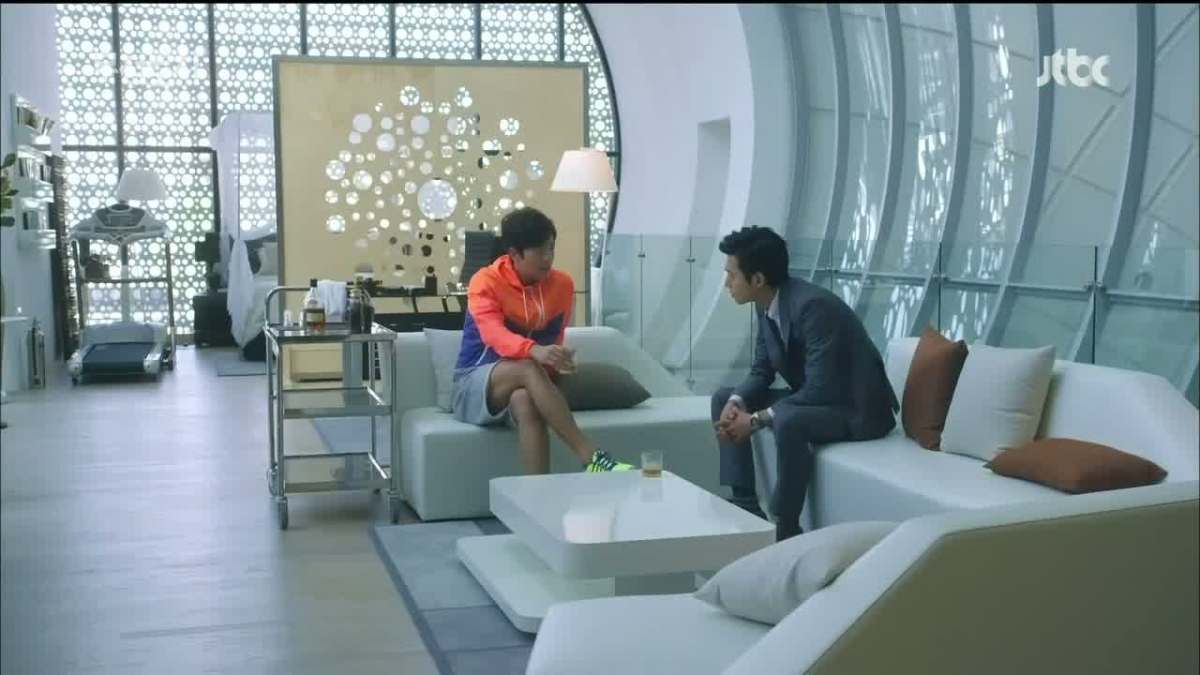
So like, there’s a consumerism angle in all of this, isn’t there? Shrouding your characters in glamorous clothes, jewelry; placing them in lush living environs, it’s a way of introducing your audience to the high life in the hopes that they’ll follow suit in their pursuit of their own personal piece of happiness.
These beautiful interior designs were really one of the first things I noticed when I watched the first series I was introduced to – My Love from Another Star. Who can resist falling in love with that gorgeous dark wood library? And I think that’s part of the thrill of watching these dramas, as well. For most of us, that’s about as close as we can get to such beautiful homes, and the pleasure comes from just being able to see and take in the sights of all that lush architecture, so much so that seeing itself becomes an act of consumption.
6. Viewing Practices
While I admitted earlier to feeling that some of the dramas started to feel a little tedious with their will-they-won’t-they back and forth in the romance plot, I did find myself still straining to find out what happens next. And this is why I called it a tactical retreat. Because even though I lost patience with watching the drama unfold, I found substitutes for it.
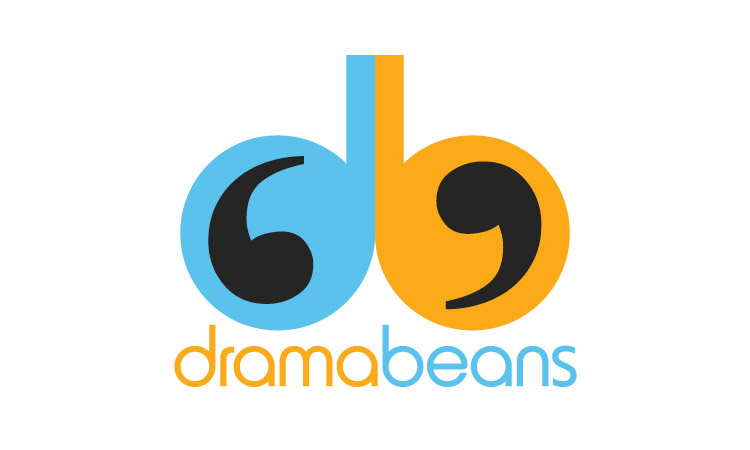
I began to notice some very interesting fan-practices that grew out of attempts to supply this need and that’s where I came across the Dramabeans website. This is a website that basically delivers blow by blow recaps and summaries of individual episodes for a host of different series. The strength of websites like these though, is really dependent on the ability of the writer to capture the key dramatic moments and represent them in all their melodramatic glory in words with the aid of screen caps.
I was fairly fortuitous that one of the first websites I found was the Dramabeans website because the writers are firstly, really attuned to where the key dramatic moments are; secondly, great writers with their very snappy, tongue-in-cheek summaries and comments; and thirdly, weirdly critical and analytical. I love this last part best because they take pains to be really thorough in pointing out things like themes, doubling, consistencies, inconsistencies, etc. And this kind of rigor in one’s writing can only lift the genre of k-drama up as a whole.
The other viewing practice that I currently find myself very much engaged in is skipping scenes on Netflix. I feel again quite fortunate that my favorite drama out of the five, Heartless City, is available on Netflix so this means I can skip to scenes I like and rewatch them as many times as I want.
So what about that male gaze, eh? If I, as a female viewer, can exert this much control over the drama in terms of the degree of manipulation of the image and my extent of objectification of the male body on screen – I mean for all you know, I could be watching that one shower scene over and over again to my heart’s content (and I totally am… I have to make full use of that $7.99 I’m paying for Netflix a month!). It sorta makes me feel like a puppet master with these characters on strings, performing for me on demand.
So what is this? Is it female empowerment? Or am I still subsumed in a larger system that is constructing these images for me fully aware of what I want as a female viewer and taking my money in exchange for providing me with this content?
Anyway, this is a blogpost and these are just random musings. I don’t have the answers and if I keep trying to find the answers before I post anything, I’ll never post anything.
So back to this critical, formalistic awareness we were talking about before in the critique of drama on DramaBeans – formalistic awareness is somewhat linked to my last gripe about K-drama before I go into why I really do still love watching k-drama despite all my grumbling.
Brief J Vs. K Drama Comparison (Hero [2001] Vs I Can Hear Your Voice [2013])
I was introduced to I Can Hear Your Voice earlier this year by some friends and as I was watching this semi-serious legal drama I was suddenly reminded of Hero (2001) an old J-drama I used to watch. I went to look up the first episode to rewatch it and I was struck by its formalistic awareness compared to I Can Hear Your Voice. Here are just some random things I noticed.
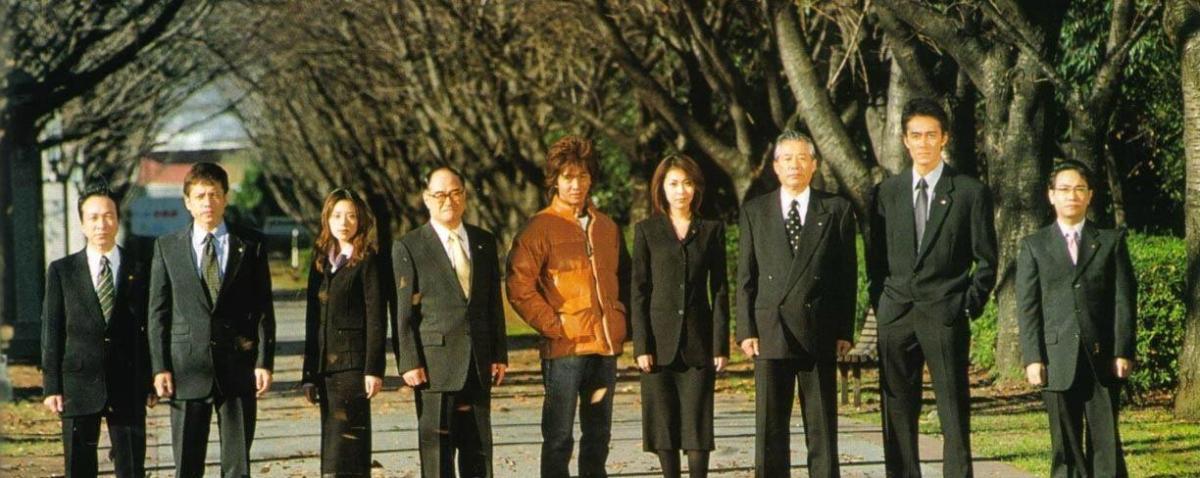
The opening sequence in Hero, Episode 1 is a coordinated synchronized raid of a politician’s house and offices where all the public prosecutors and the police come out in force at 8am sharp to seize any and all documents and evidence found at those place.
What’s interesting about this sequence is that it opens with extreme close-ups on just the eyes of the prosecutors who will form the main supporting cast of the series as they converse with each other. The close-ups leave a lot out of the frame and there’s very little visual information to go on in terms of being able to match lines of dialogue to faces or personalities. And this idea of framing and seeing, omission and getting the full picture that is foregrounded here gets revisited consistently throughout the first episode.
The next time we see it referenced is when we get a hint of what the inter-office and out of office relations are like amongst this small group of public prosecutors. We find out that the female prosecutor who’s visually coded as the vamp because she wears a lot of red while everyone dresses in drab office colors is sleeping with another prosecutor who’s married and has a son.
Despite appearing to be the vamp, she’s also victim because in a shot for shot repetition of their tryst at a hotel in the middle of the episode and at the end of the episode, we see that immediately after their tryst he goes home to his son and his wife without so much as a backward glance.
This sort of split between public and private personas is especially important given the fact that these characters are public prosecutors and civil servants thus this minor subplot of the office affair becomes a double for the main case with the politician who is also a public figure whose private greed has encroached on his public responsibilities in the form of embezzlement.
The other way in which this office affair subplot doubles up is in terms of appreciating depth of characterization because the first episode is also when the main character, Kuryu Kohei (Takuya Kimura), joints the Tokyo branch. Everyone doesn’t know what to make of this sell-a-vision addict from a small seaside town, a school drop-out who studied for and passed the bar as an private candidate, and shows up to work dressed in t-shirt, jeans and lurid orange down jacket. In fact, in their first encounter, they dismiss him as the TV repair guy. And as you can probably guess, despite his refusal to wear an actual suit and show up at the public prosecutor’s office like a normal office worker, he’s the most dedicated and hardworking of the bunch. So there, appearance Vs. reality split.
But what about this framing and understanding the big picture, wherein what appears in a picture can belie or occlude reality? These themes get interwoven into the two cases to be solved in the episode. One seems to be a small, open-and-shut case involving a panty thief with a prior record while the other is trying to crack the politician’s watertight alibi of being on a sailing trip in the open seas with his family when the embezzlement supposedly took place.
I’m like so super impressed that both cases are cracked by careful examination of the visual image – what’s in frame, what’s out of frame – thereby creating a beautiful marriage between form and function in this first episode.
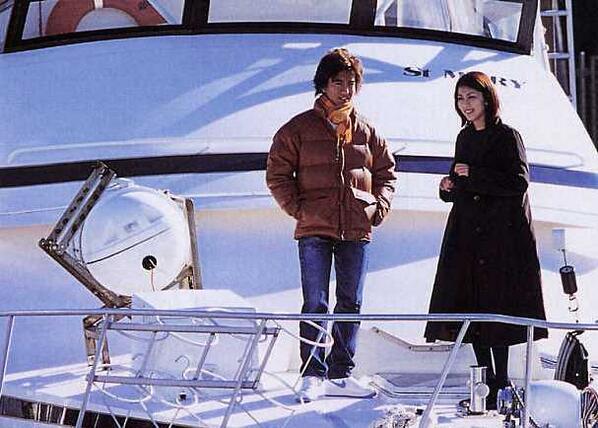
The politician’s alibi comes down to a dated photograph of he and his family on his yacht in the open seas. But Kuryu observes that it’s a windy day and in order to get the shot of the yacht and the family in the frame, the camera would have to be at the furthest end of the bow of the yacht meaning that they couldn’t have relied on a tripod and another person had to have been on the yacht. Given that all the other staff had their own alibi, the politician had to admit that a passerby helped them snap the shot which would have been impossible if they were really out on the open sea. Ta-da! What lies outside the frame has a sneaky way of making its presence known in-frame as well leading to a collapse in the dichotomy between appearance and reality.
The other case of the panty thief was solved by a recording of a magical girl anime. The thief’s alibi was that he had to be home to record the anime manually because he didn’t know how to work his VCR timer. Nobody believed him. But when Kuryu looked at the recording for the day of the supposed crime, the was recorded perfectly and even omitted the 5min news bulletin special about the very public arrest of the politician which wouldn’t have been possible if the thief had relied on a timer. Ta-da! Omitted reality saves the day.
So granted that Hero kinda looked like crap because it was grainy, washed-out, low-budget and kinda minimalist in terms of set and wardrobe there’s something very striking about the way it was told that holds on to me. There seems to be a physical lack in the production values that impacts the look of the series detrimentally because it’s just not as beautiful? But there’s an excess of content and meaning that gets highlighted in the juxtaposition with the series’ minimalistic setting and wardrobe.
Since I’ve already told everyone about DramaBeans, here’s the episode summary for I Can Hear Your Voice, Episode 1 😛
Conclusion?
So I wanted to go on and talk about what I still love about K-drama but this post is just getting way too unwieldy. I’m gonna conclude here and start another post with maybe some thoughts on melodrama and why I love K-drama so much and why I’ve been obsessing over Heartless City lately.
In the mean time feel free to comment, agree, disagree, with anything I’ve said so far and even recommend other series 😛
I really liked Personal Taste and Heartless City, so if you know any other dramas that follow in that vein I’m more than open to suggestions. Till next time!

Interesting read and you lay down more questions than answers which shows that you understand some of the bigger dilemmas in dramas that are lacking content and visual clarity. I will look forward to your next read.
LikeLiked by 1 person
I definitely agree with your notion that this genre is for women. In other words, I think Korean males are lack of representative, at least in the world of dramas. This is why Korean male audiences distaste a drama in which the romance takes over diegetic narrative. Also I think they are faithful to dramas that were written by male writers. This suddenly makes me gloomy.
LikeLiked by 1 person
B-but… don’t males already monopolies most of the media? And I’m sure there are some shows that are more plot-driven rather than romance-driven, I probably just haven’t watched them before cuz Juan and Daye just know my tastes too well 😉
Aigoo… this is such a small thing to be gloomy about. Chin up 🙂 You guys just wrapped up a successful conference today! Congratulations 🙂
LikeLike
Yes I agree. Korean film is undoubtedly dominated by male. In Dong-hoon Choi’s “The Assassination”, for instance, the heroine eventually fails to pull the trigger, right? But in drama, there’s not much room for male’s representation. For this, I agree with Professor Choi’s notion that this female-oriented tendency is caused by Korean women’s oppressed desire.
Yes, definitely, women had little clout than men, but men have also been oppressed by exploitative social / economic system. And I think this is why blockbuster historical dramas (which are written by male writers) flourished from early 2000s to some point around 2010. Heroes in such dramas represent righteousness, brotherhood, loyalty, or autonomy.
I am afraid if I reacted too much like a stubborn. Also, how can I ever be compatible with Doctor Juan K-drama Mata? Anyway, I mainly agree with your argument. And thank you for your compliment.
LikeLiked by 1 person